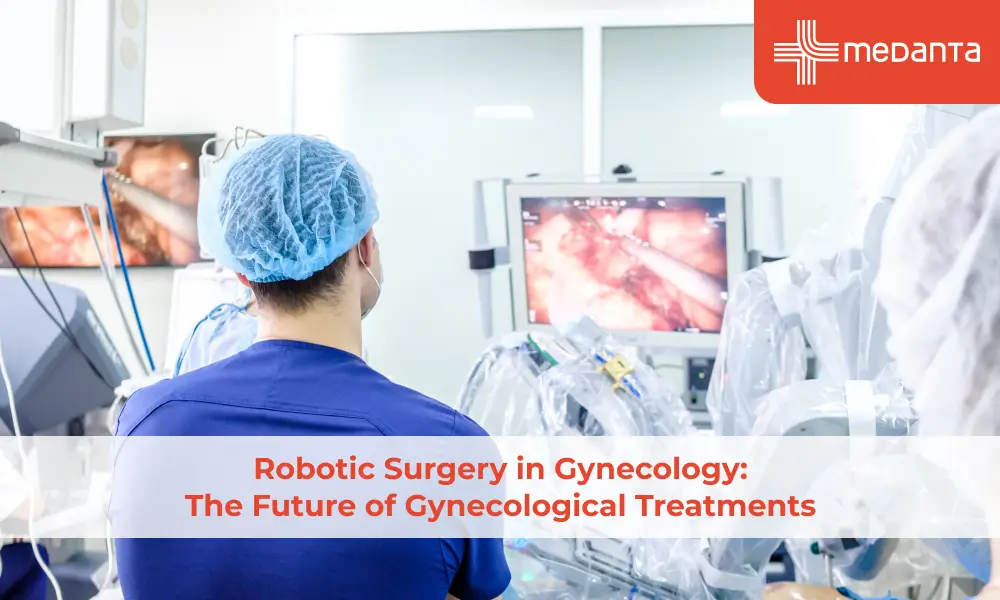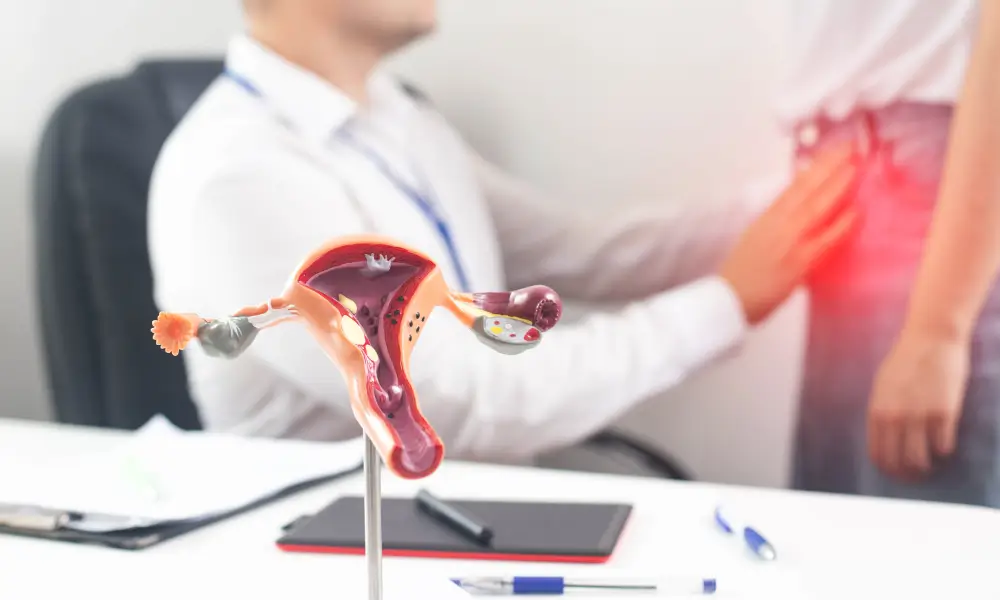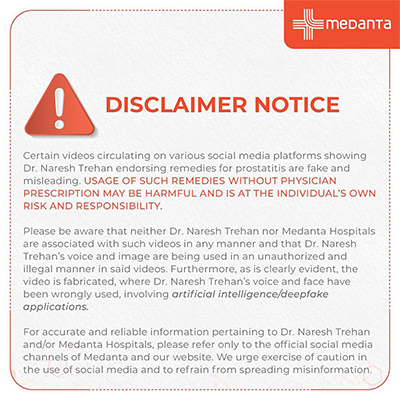Robotic Surgery in Gynecology: The Future of Gynecological Treatments

TABLE OF CONTENTS
Medical technology is advancing at lightning speed, and no technology has shaken things up quite like robotic surgery. This type of surgery has completely changed the way doctors work and operate on gynaecological conditions. Robotic surgery in gynaecology provides enhanced precision, reduced recovery periods, and fewer post-op complications. But how is it done, and why is it so important? Let's take a closer look.
What Is Robotic Surgery
Before we talk about anything else, let’s answer a key question: What is robotic surgery? Contrary to what some might imagine, this doesn’t mean a robot is performing surgery independently. Instead, the system consists of robotic arms controlled by a surgeon using a console. These arms have greater flexibility than human hands and can make incredibly precise movements.
The da Vinci Surgical System is the most widely utilised system, and it enables minimally invasive surgery using small incisions. Unlike conventional open surgery with huge incisions, robotic surgery applies small tools and a camera that offers 3D close-up views of the operating field.
What Is the Role of Robotic Surgery in Gynaecology?
For decades, gynaecological conditions like fibroids, endometriosis, and ovarian cysts had to be treated with open surgery or laparoscopy. Although laparoscopy was an advancement, it lacked precision and endurance on the part of the surgeon. That is where robotic surgery for gynaecology comes in as an advancement, with complete control and precision.
Here are some common conditions treated with robotic-assisted surgery:
Uterine Fibroids: Fibroids are abnormal growths in the uterus that produce heavy bleeding, pelvic discomfort, and infertility. The old method was either to eliminate the fibroids using a large cut (myomectomy) or to eliminate the uterus (hysterectomy). Using robotic surgery, doctors can eliminate fibroids with maximum accuracy without sacrificing too much of the uterus.
Endometriosis: This debilitating illness arises when uterine tissue grows outside the uterus, usually leading to intense cramps, profuse bleeding, and infertility. Robotic surgery in gynaecology enables the removal of these abnormal growths with little to no destruction of normal tissue, reducing pain substantially and enhancing fertility rates.
Ovarian Cysts and Tumours: Large ovarian cysts or tumours usually need to be surgically removed, particularly if they are painful or impact ovarian function. Robotic surgery can allow for the gentle manual handling of the ovaries and help doctors maintain the right reproductive health as infected cysts are dissected.
Hysterectomy (Uterus Removal): Whether for cancer, endometriosis, or fibroids, hysterectomies are sometimes inevitable. Robotic gynaecology surgery makes it less painful and safer and decreases blood loss and hospitalisation.
Feature | Open Surgery | Laparoscopic Surgery | Robotic Surgery |
Incision Size | Large | Small | Small |
Scarring | Significant | Minimal | Minimal |
Blood Loss | High | Moderate | Low |
Recovery Time | Weeks | Days to weeks | Days |
Surgical Precision | Moderate | Good | Excellent |
Surgeon Fatigue | High | Moderate | Low |
Clearly, robotic surgery in gynaecology provides the optimal combination of accuracy, recovery time, and safety.

Advantages of Robotic Surgery in Gynaecology
Most women are often worried about going through surgery, particularly for their reproductive organs. However, the advantages of robotic surgery make it a very efficient and patient-friendly procedure for gynaecological surgery. It provides precision, minimal invasiveness, and quicker recovery, and is a very feasible choice for those weighing traditional surgery.
Less Scarring and Smaller Incisions: One of the most significant advantages of robotic surgery in gynaecology is that it involves just a few small incisions, as compared to the open surgery method, which involves making a large cut. The small cuts cause less scarring, less chance of infection, and less complicated recovery. For women who care about cosmetic results, this is a huge advantage.
Shorter Recovery Time: Recovery from the surgery is usually a long and difficult process, but robotic surgery cuts down on most of this recovery time. The majority of patients are at their normal activity level within 2-4 weeks, while open surgery takes 6-8 weeks. This translates to less downtime, fewer lost workdays, and a quicker return to normalcy.
Less Pain and Less Blood Loss: Robotic surgery uses smaller incisions and more accurate movements; it damages surrounding tissues less. This results in less postoperative pain and less medication needed to eliminate pain. Moreover, there is minimal blood loss, which reduces the need for a blood transfusion during or after surgery.
More Accurate Surgery: The robotic platform increases a surgeon's skills by removing the tremors/shaking of hands and offers an enhanced, high-resolution 3D view of the operating area. This leads to unparalleled accuracy with delicate surgeries, making it extremely useful in the scenario of complex conditions like profound endometriosis or fibroidectomy while preserving healthy tissue.
Less Risk of Complications: Minimally invasive procedures, such as robotic surgery, greatly minimise the likelihood of traditional post-operative complications like infection, excessive bleeding, or clotting. Fewer complications translate to fewer days in the hospital and an easier recovery process.
Improved Fertility Preservation Outcomes: In cases where females want to become mothers in the future, fertility retention is a major issue. The precision of robotic science in gynaecology enables gynaecologists to remove defective tissue while preserving the reproductive tissues as much as possible. This enhances prospects of conception in the future.
Effective in Difficult Cases: Other conditions gynaecologists encounter demand more complicated surgical interventions which even minimal or laparoscopic procedures can perhaps not best deal with. Robotic is specifically helpful for surgery to contend with deep structures of the pelvis, far-spread adhesions, or prior operations and resulting scarring.
Final Thoughts
The introduction of robotic surgery in gynaecology has totally revolutionised the treatment of diseases such as fibroids, endometriosis, and ovarian cysts. Less invasive techniques, more precision, and shorter recovery periods are the reasons behind the growing number of women preferring this method. The future of healthcare has arrived, and it's moving us toward improved surgical care with the help of robotics.
Outside of gynaecology, urological conditions like having multiple kidney stones are being addressed by robotic-assisted procedures, making procedures safer and more effective. If you or someone you know is suffering from a gynaecological condition and are considering surgery, visit your nearest super-specialty hospital as soon as possible and discuss robotic surgery as an option!
FAQs
Is robotic surgery safe for gynaecological procedures?
Yes, robotic gynaecologic surgery is very safe and provides more precision, less blood loss, and quicker recovery than traditional surgery.
Is robot surgery reimbursed by insurance?
Most insurance companies reimburse robot surgery if it's medically necessary. But check your personal insurance carrier.
What are the advantages of robotic surgery compared to traditional surgery?
The benefits of robot-assisted surgery include smaller cuts, less pain, fewer complications, faster recovery, and greater accuracy during surgery.
Is robot-assisted surgery appropriate for treating multiple kidney stones?
Yes, a specialist kidney stone urologist can use robotic surgery for advanced cases where there are big or several stones that must be removed safely.
How long is the recovery time from robot-assisted surgery?
Most patients heal within a week. The recovery from robotic surgery is much quicker than from open surgery.






